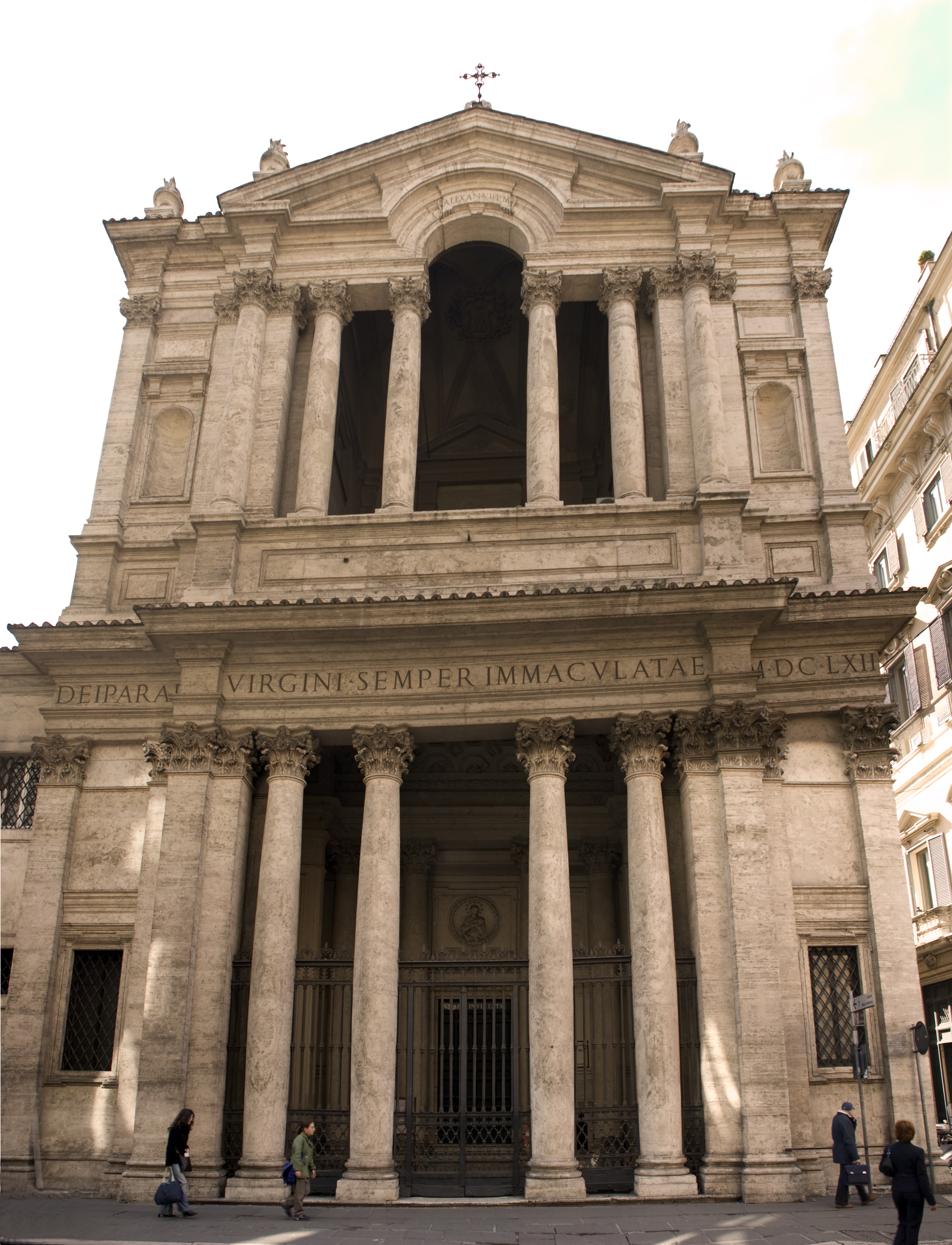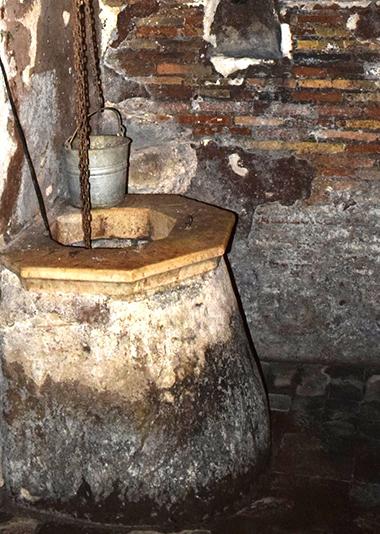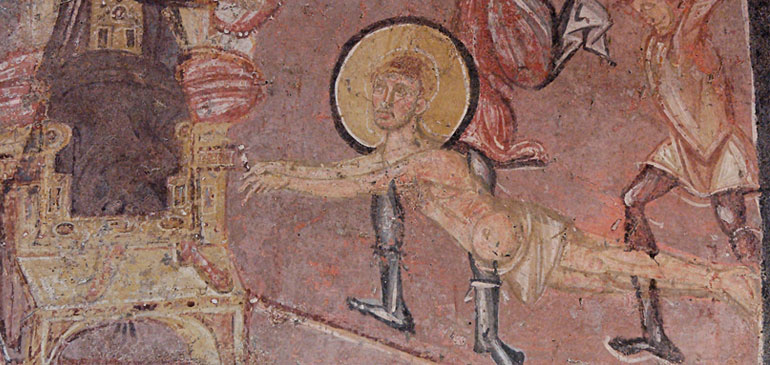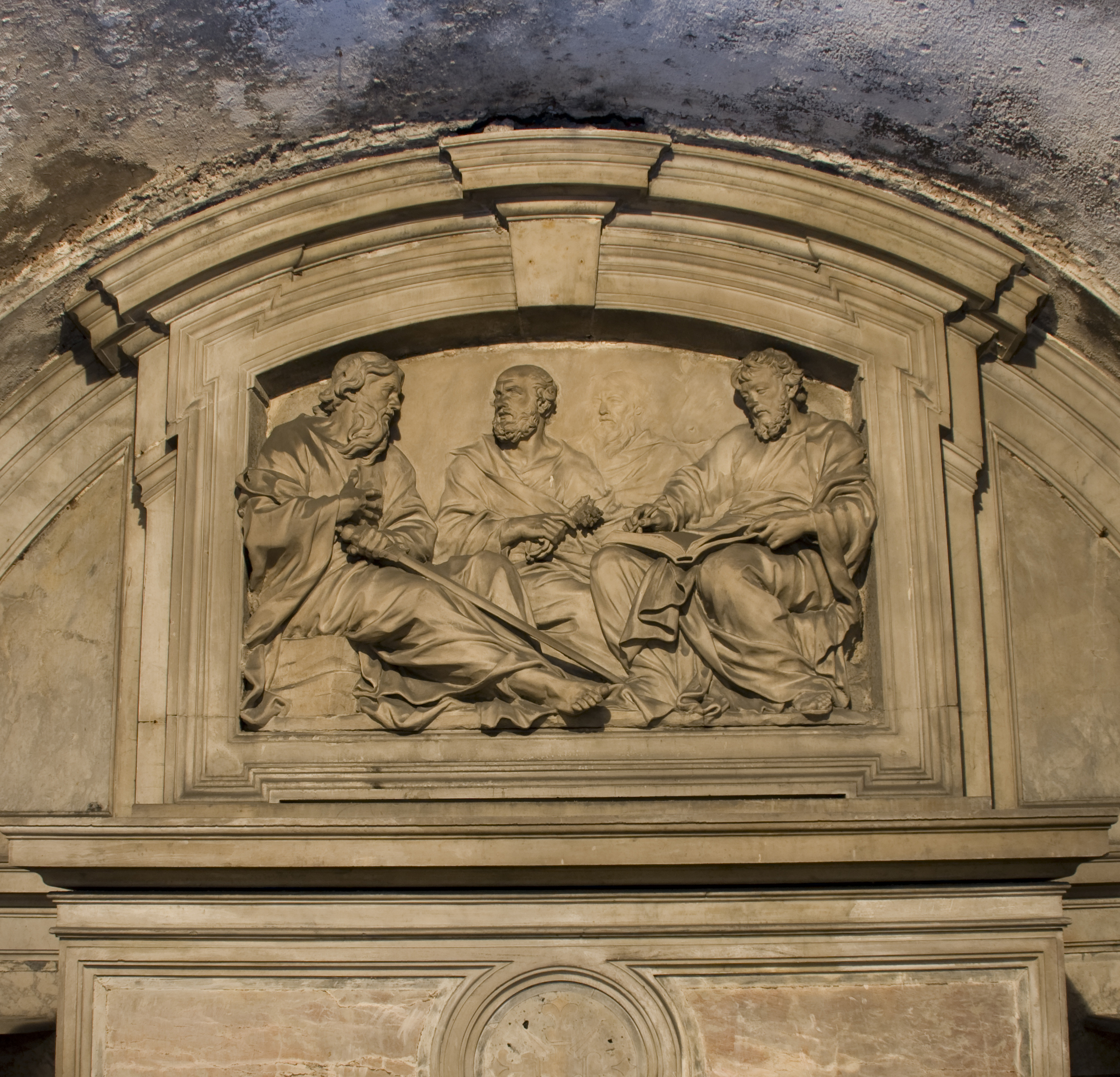La chiesa di Santa Maria in via Lata è fondata su origini molto antiche. Intorno all'anno mille venne costruita su una precedente del VII-VIII secolo. In seguito venne trasformata secondo lo stile barocco. Oggi conserva comunque la memoria degli Apostoli Pietro e Paolo, che vennero ospitati, secondo la tradizione, proprio in questi edifici negli anni della prigionia a Roma.
La Chiesa di Santa Maria in via Lata fu costruita, secondo le testimonianze del tempo, sulla fine del sec VII d.C., sotto il Papa Sergio I, che istituì qui una diaconia. Era una struttura destinata all’assistenza spirituale, ricavata da preesistenti costruzioni di epoca romana. Successivamente venne edificata una chiesa medioevale con la facciata rivolta verso l'odierna Piazza del Collegio Romano. Nel corso del tempo, l'edificio subì diverse ricostruzioni fino ad assumere, con papa Alessandro VII Chigi, il suo aspetto barocco. A Pietro da Cortona venne affidata la realizzazione della facciata. Si occupò anche di riportare alla luce i sotterranei creando un percorso per permettere il pellegrinaggio al luogo santo ritenuto dimora degli Apostoli.
Informazioni utili
IMPORTANTE: Per ordini superiori a 10 biglietti è obbligatoria la prenotazione, scrivere a info@omniavaticanrome.org
BASILICA DI SANTA MARIA IN VIA LATA
Dalla Stazione Termini
Per tutte le linee scendere alla fermata Piazza Venezia

Meeting with the most ancient Christian testimonies present in Rome. In the basement of the church of Santa Maria in Via Lata is the house where Saint Marziale Martyr hosted Saint Pietro, Saint Luke and Saint Paul. Christian tradition reveals that the apostle Peter lived in this place during his stay in Rome and that St. Paul lived under house arrest for two years. At that time "the Apostle to the Gentiles" continued to preach the Gospel and wrote some of his Letters. Furthermore, it is said that Saint Luke here wrote the Acts of the Apostles and painted one of the seven portraits of the Virgin. Over the centuries, the memory and veneration of Christians has been maintained for the memory of the Apostles who were the first evangelizers in the Church.

The church of Santa Maria in Via Lata is like the custody of an ancient and important place of memory of the millenary history of Christianity in the Eternal City. The historical location dates back to the era of Emperor Hadrian, who gave a new urban layout to the street, having numerous buildings built for various functions. The first construction of the I century. A.D. it consisted of a porticoed building, parallel to the Via Flaminia, subsequently divided into seven rooms, arranged on two levels. Scholars speculate that they were used as warehouses and, later, transformed for other functions.
The well and the column are memories of St. Paul's stay in captivity in these environments. New investigations carried out in the last century have made it possible to find other finds at the bottom of the well, some vases and an iron chain.
hide
After the third century, the building housed a "diakonia" for the reception and spiritual assistance of Christians, which was later transformed into a church. Today part of the apse of the medieval church is still visible. The walls were covered with frescoes dated to the 7th century AD, recently removed due to humidity. Once restored, they were exhibited at the Crypta Balbi National Roman Museum.
The themes of the frescoes show the importance of the diaconal building: The Multiplication of the Loaves and Fishes, the Stories of the Seven Sleepers of Ephesus, the Prayer of Jesus in the Garden of Gethsemane, the Madonna enthroned with the Child between St. Peter and S. Paolo.
hide
Also noteworthy is the monument of A. Ridolfi and the marble high-relief by C. Fancelli on the altar of the central Oratory, which represents the SS. Pietro, Paolo, Martial and Luke.